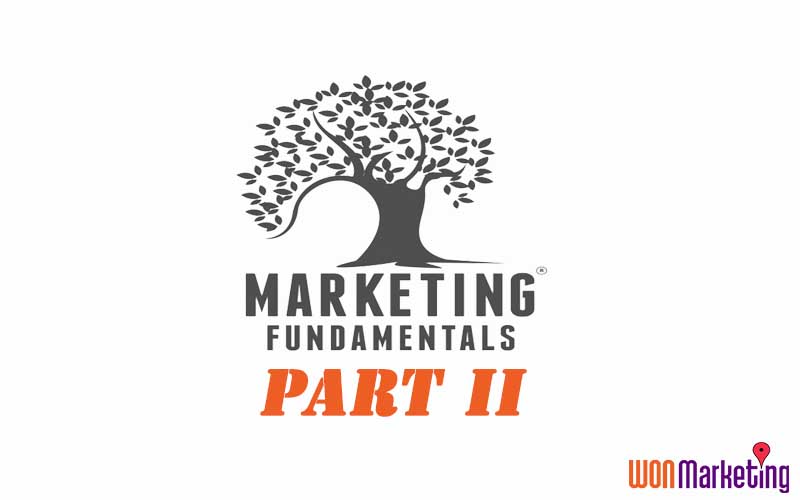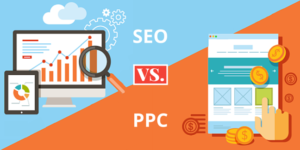(continued…)
As a result of social media and the direct or indirect influence of social media marketers consumers are more likely to make buying decisions based on what they read and see in platforms we call “social” but only if presented by someone they have come to trust. That is why a carefully designed social media strategy has become an integral part of any internet marketing plan. This influences both conversion and driving traffic.
Many restaurants have gained success by engaging into this game with their audience and assigning discounts or online only deals.
Consider this. A coupon in a newspaper. As a marketer it’s not about reducing the profit but a coupon is meant to increase the volume. What is really messed is the value in the brand of that coupon. I would never keep an advertisement for business but if it’s good to get me a free soda next time I get a pizza I will keep that paper indefinitely in my drawer. Every time I open a drawer I see their brand. For this reason we have to rethink the coupon and social media.
As an example, by offering rewards for those that have gained mayorship from foursquare or yelp is a way to encourage repeat business and provide a perception of a certain culture. You can make this fun and in turn you have whole bunch of prospects and customers that are regurgitating and sharing all of your information on their favorite social networks.
Consider creating some viral content. An insurance company might want to discuss the last five years of the rising levels of the local river and their thoughts and implications for what could happen to the town if nothing is done. Maybe this video would be an exaggeration but they could talk about certain buildings that are wiped out. This would create fear in our community and awareness towards this rising river. The author, a local insurance company, would then in turn increase their exposure whether people agree with them or not. This exposure is recognized by the search engines.
One of my clients, a taxi service in Chicago, is including their QR code in the back seat of their taxi. They encourage their customers to scan this code with their smart phone and share their experience in this Online. People are uploading pictures of themselves, leaving reviews and rating an army of links back to my client site. We are not getting the citations or links ourselves, but we are using the power of social media to generate this exposure.
In the past, we have created new Wikipedia pages and send the content sources to authorities in the industry that we know would appreciate it. They in turn share this new valuable information with their friends and followers and give credit to the author, the business in question. Yet another way to generate citations from users
as you can see I can simply just go on and on with a variety of different strategies for social media to acquire links and citations. You must really understand your audience and dig deep to uncover new ways for your audience to enjoy engaging in a conversation related around your business. Once you’ve discovered this, identifying and implementing a certain strategy for your client or your business is the easy part.
Local PR
It is not that difficult to devise a PR strategy with local newspapers and publications to run content that sites the business in question both in the off-line in the online world and this is a very high authority citation for any local business.
For example, finding and joining local networking groups is not that difficult to get business citation as a member of one of these websites and having the search engines index this information and assign authority and credibility to the business in question.
Joint Ventures
One often overlooked opportunity for local businesses in the online world is to identify joint ventures with other businesses that serve similar audience. For example chiropractor’s, massage therapists and dentists could all very easily share their patient database with one another. By identifying local theme related businesses that you can create partnerships with and joint ventures with, having other local businesses cite your business on their website and their pages is relatively easy to accomplish.
In the case of your Internet marketing agency, a credit card processing firm as an example of an excellent JV. We are both going after the same audience and there was nothing, both direct and indirect, that would be perceived as competition.
Identifying volunteer and donation opportunities through local and theme charities is an excellent opportunity to give a little bit to the community and in turn get referenced online.
Again, this comes down to your audience profiles. By understanding the audience in question, and where they are hanging out on the Internet, will give us great insight into understanding which sites we may want to work with and create a potential partnership with.
Completive Analysis
In marketing principles, competitive research is an extremely important stage in the marketing planning process. The more we can understand about the rights and wrongs of the direct and indirect competition, the better we can position ourselves to market our business or our clients.
Therefore, we are going to take a look at the citations acquired by the competition.
First, let’s take a look at what Google might see on our competition. Refer to your competitive research list, which is taught in the Marketing Principals section. You will need your competitive research completed and your strategy map for this exercise.
Do a search for your number one keyword and take a look at the results. Identify who you’re top organic and local competitors are and document them on your competitive analysis excel file, including their full NAP and any NAP variations. Then do a Google search for each of their NAPs and variations of their NAP, such as address, business name and DBAs. Scout the top three pages for relevant sources!
In your competitive research file that I hope you have for every one of your clients, list the URL of all your main competitors. Visit each one of those sites and make a determination of whether or not this is a citation that you can acquire. Once you accomplish this step set strategies in motion to contact these sites to acquire the citation. Some of these sites will be different portals, review sites, local and theme blogs and some will not fit into any of these categories. These are citations that you need not acquire.
Local Directories, Publications, Networking Groups
By joining the Chamber of Commerce or different local networking groups is not that difficult to get business citation as a member of one of these websites and having the search engines index this information and assign authority and credibility to the business in question.
I suggest taking that businesses chamber logo and attaching it to the businesses website with a single one-way link to identify from a user value perspective at that local business participates in local networking groups and supports the community.
I joined my chamber of commerce for $20 per month. This is a no-brainer to me for any business to get listed and get a highly trusted citation.
I started a NING social platform for my niche. What about Facebook groups centered on your community? What about parenting forums if your client is a local restaurant?
Think about the business and reference your audience profile sheet. When considering the audience character traits, perhaps dental patients in Vancouver, Canada, consider what’s important to them.
Ok, so this dentist we’re assuming has positioned themselves around preventative maintenance, rather than say cosmetics, such as teeth whitening. Their patients are those who make an effort to get their teeth cleaned, what to do the work to keep them white and healthy. Being in Vancouver, they’re all health nuts, try and find a greasy spoon and it’s hard. It’s all about salads and weed, odd place.
What do stoned health nuts do online? Well, first I’d start by following some of these people. Twitter search makes this easy to find followers.
Then I’d follow the links they are all talking about. I’d start to collect all these location sites and document them over time. After a few weeks of this system in place, I’ll have a great idea of where these people frequent. Everyone on the social sites likes to share information. This information is valuable when trying to understand where our target audience is hanging out.
Non-Conventional Citation Ideas
- Start Hosting Parties and Events
- Get a Redbox or ATM at your business
- Free Wi-Fi
- Sponsor local events like festivals or charity events
- Check in deals with Foursquare, Google+, Groupon or Facebook
- Install a weather monitoring station
- Add a cellular antenna to your property.
- Install a Webcam.
Customer Reviews
Considering reviews, we’re going to be looking at the benefits of reviews, quantity versus quality, establishing profile Authority and social and review ranking, review filters, review creation, review acquisition strategies and patterns, Rich snippets, review coding and finally an overview of review sites their impact industry perception.
What is a Review?
A review is a personal evaluation of a movie, publication, game, music , book; a piece of hardware like a car, home appliance, or computer; or an event, such as a live music concert, a play, and finally we’re here to talk about reviews for businesses, such as Restaurants, dry cleaners, apartment management companies, mechanics, doctors, day spas, limousine services, law firms, and other brick and mortar businesses who lose and gain customers daily based on their past and current customers’ opinions.
There are 1000s of local business review sites and directories, but as a business owner, you should first pay attention to the truly important ones already showing up in Google, Yahoo!, and Bing for your keywords. You can list your business on the sites I’m going to talk about later where past and current customers can review for free, although some have paid versions in order to “expand your page” like MerchantCircle and CitySearch, it’s not always necessary because they will take reviews all day (more content for them).
Review Benefits
There are many reasons that benefit a local business in terms of reviews. While considering online marketing principles, reviews accomplish three things. Ranking, conversion, and service area. There are many misconceptions about how reviews influence ranking, many don’t consider the importance of conversion and finally reviews solve a very common problem among many types of businesses.
Directly from one of Google’s own pages when discussing complex code for micro data formatting to convey ratings they have the following text “This section describes how you can mark up your rating information to use images (for example, an image of four stars) to convey ranking information. “
This is yet theonly public information from Google that explicitly says reviews influence rank, but this is enough proof for me.
Getting customer reviews is an important step in improving your rankings in the Google Local Business Results. Ask for a review anytime someone compliments your services. Implementing a customer review policy in your company could dramatically improve your rankings.
Ranking
There are several factors that can be measured for particular review by a search engine. For example, quantity of reviews, quality of reviews, review acquisition, location or review, review acquisition patterns among sources, data of sources and of course source politics. We are going to be taking a look at all of these factors and what influence they might have on your ranking.
Conversion
When a prospect lands on a particular places page, we already know that reviews are a high influence towards the consumer’s perception of the business. We’re going to be considering why only a small number reviews are shown and discussed the social review ranking within these places profiles and how each of these reviews influences the consumers conversion towards a call to action on that business.
We’re going to be considering which review sites have high influence within Google places and how to influence the activity in a positive manner for each of those sites. By driving a high quality review system into a local business insurers that properties like Google places only shows reviews that provide the highest conversion to a call to action. While some businesses are focusing on Internet marketing efforts of driving traffic, few go to the length of improving their conversion ratio and therefore there is a massive opportunity to drive a call to action for your clients. Make sure you make this an important part of your strategy for your clients to ensure a high quality service provided to them and to help keep your clients for long-term.
Service Area
Most service-based businesses face a significant problem when marketing themselves on the Internet. For a variety of reasons, different businesses in different geographical areas clearly different service areas. Service area is defined by the area in which the business will provide its services or the geographical reach in which customers will travel in order to do business with that company.
Reviews are a very important part of establishing trust towards establishing your service area in the eyes of online websites like Google places. Let’s face it, a business’ service area essentially is where their customers reside. Whether it’s a business that travels to a consumer’s home or business or the company that tracks clientele to its storefront, its service area defined by a web of its customers. We know the search engines know exactly location of where these reviews are being left based on GPS, IP address information, cellular triangulation or user input. When users leave reviews that are trusted more than less authoritative reviewers, those particular reviews provide further trust to a search engines on establishing a web of your reviews.
Local Search Review Profiles
Reviewers, Trust and Authority
A reviewer can either be a guest or a registered user, typically on a review site. We already know that reviews can be left on any website, but trust is assigned to that particular website and review. We are going to be taking a look at a list of sites that we know of high trusted authorities within the major search engines. Within these sites is a community of registered users. When a registered user leaves a review, that user could have a review that offers tremendous value or could be a bogus review from a competitor. Both the search engine and the review sites and an algorithm are in place to rank reviews
Review Profile Usage Patters
The usage patterns of a particular user within a review site can potentially have many factors that are measured. For example, a reviewer might consistently have reviews that are three stars or less, but we know published by yelp that 85% of all reviews across their site and the web of three stars or more. Therefore the user that consistently has lower score reviews, will be assigned less trust for their reviews because they do not follow the norm of the general population.
Another example is the reviewer that has multiple profiles on multiple sites and leaves multiple negative reviews for one business when this goes against their typical review submission pattern. This would raise a red flag for search engine of less trust within that particular review.
There are likely dozens and dozens of scenarios that we can come up with where consumers try and harm a local business in the search engines but because of filters and an algorithm in place, the review sites and search engines are getting much better at being able to sniff out these people. In other words don’t fret from a few negative reviews and focus on pushing your happy customers to leave reviews. When I say pushing, I mean giving them the right tools so they can go ahead and say all those nice things that they are to have been saying.
Establish Profile Authority & Social Review Ranking
Establishing profile Authority can be a little bit of a challenge because you are attempting to influence the customers of your client. You need to work with your client to ensure that they are doing everything they can to help influence acquisitions in a positive manner and in turn focusing on those profiles that have high authority.
It is common sense that a search engine’s goal is to provide the best user experience for their own users. It makes sense that the best user experience would be to have the most democratic unbiased information for consumers to make decisions about that business. So, this is what the filters and the algorithms are consistently trying to accomplish. As much as we can try and learn everything we can about all of those factors and give the search engines exactly what we think they want, it is obvious to focus on our clients customers rather than the search engines provide the best user experience.
Profile Authority is established by users who have a common typical review pattern. There are certain norms and thresholds that dictate what a common typical review pattern is, but the easiest way to ensure that your customers are reviewers with high authority are reviewers that essentially engage in a community and a natural organic form. The best way to ensure that are reviewers are natural and organic, is for us to provide the education and the tools to leave these reviews on sites that have high influence and to ensure that these reviewers are consistently engaging in their community and reviewing multiple other businesses in their area.
Drive Education to Build Profile Authority
You have many options available to you on how to drive the appropriate education to your customers’ customers.
We are going to take a look at a review acquisition strategy. There is a document that is included in The Accelerated Program for Local Online Marketers course and is intended to help educate our customers’ on the process to leave reviews. This is an excellent piece to drive education to your customers to encourage them to encourage their customers to continually leave reviews. I will cover this further in another video.
As you might know, e-mail marketing is a critical strategy for local business to market themselves in my opinion. You can drive short education pieces through e-mail marketing to your customers’ customers. This will give you an opportunity to potentially earn the right to providing you know marketing as a service.
With all SEO campaigns now, we install a WordPress blog for our clients. This is another great place to continually drive content about reviews to educate our customers community.
Creating and sending content to be published by local networking groups and theme related sites is a great way to drive education and acquire a citation on your client’s behalf.
Obviously, social media campaign with links that drive to content sources that add value to the end-user is a strategy that works well when you have qualified followers or friends.
We can discuss different strategies that you can provide education to the end-user about the value of reviews for both of them and their vendor. The point here is that we have to drive this education to the end-users or our system reviews might fail.
Testimonials and Check-Ins
Testimonials, reviews and check ins are channels of communication from the customer to the business. In essence, this is exactly what business is, communication from a business to a customer and vice versa.
You have a lot of choices on how to market your clients online, but I assure you if you focus your efforts on the one item that is most important to every single business then you will get success for your client. In other words, focus on the customer. Pretty simple, huh?
Testimonials are intermediated word-of-mouth marketing, and they do work when credible. In fact they work very well indeed if you work hard to get the right kind of testimonial. They can provide the much-needed social proofthat tips a wavering prospect into a paying customer.
A researcher named Mehrabian was particularly interested in how certain listeners received their information about a speaker’s general attitude in situations where the facial expression, tone, and words are sending conflicting signals.
The results are impressive.
- 55% from the visual component
- 38% from the auditory component
- 7% from language
This means that the words we choose influence human behavior with only a weight of 7%, our tonality represents 38% and our physiology represents 55%!
If this is true, then I want video testimonials of people saying great things about my company!
Social Check-Ins
Many social networking services, such as Foursquare, Facebook, Yelp and Gowalla allow users to “check in” to a physical place and share their location with their friends.
Users can check in to a specific location by text messaging or by using a mobile app on a smartphone–the application will use the phone’s GPS to find the current location.
Many apps have a “Places” button where a user can see a list of nearby places into which the user can check in. If a location is not on the nearby places list, the user can add the location directly from the phone. Once a user has checked in, they have the option of sharing their location with friends in services such as Twitter or Facebook.
Check-in and Location Based Marketing
Check-ins, badges, Mayors, stamps on passports, rewards, and other new concepts from the past are popping up everywhere on the Internet as the latest trend in location based services are applied to marketing purposes. It’s a blast from the past, isn’t it? This is just a loyalty program. No different than my coffee punch card, but on steroids. Now I get the 8thcup for free, and all my friends know about it. What about flying? I check-in at the counter. If I give them my information, I get rewards with ‘air miles’ now when I check in. I do something, exchange some value and then get rewarded if we exchange information. Same model here folks, maybe this will tell us something about how these check-ins might work for a business.
Volume and Velocity
But let’s slow down for a moment, there is a big difference between some of the old check-ins the new ones. We know that checking out at a supermarket or checking-in in an airplane typically means an exchange in value. They paid someone. Take Foursquare check-ins….the rewards, on the other hand, are offered to individuals that just showed up. I’m not quite sure yet on this. Rewarding someone for showing up makes little sense. Arguably the reward gets them in the door, and they need to be in the door to buy.
The real value of Check-ins should reward more than just physical presence. But shouldn’t the real question be is how you get the customer to the door from the beginning.



